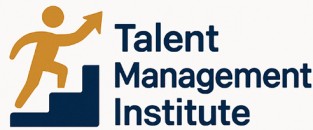
Understanding the Role of a Project Manager
Exploring the Duties of a Skilled Project Overseer
A project manager wears many hats in the world of project management, and they play a crucial role in steering projects toward success by keeping an eye on both the big picture and the finer details. Their responsibility extends beyond just planning and executing – they must also manage resources, communicate changes, and ensure that the team stays on track.
Change management is an integral part of a project manager's role. Changes can come in various forms, whether they're adjustments to the project scope or requests for additional resources. Thus, the manager must employ effective control processes to address these changes swiftly and prevent scope creep, which can derail projects. By doing so, they maintain the project’s integrity and ensure the work aligns with the overarching objectives.
Project managers must also communicate with stakeholders to ensure that any adjustments align with their expectations and that every change request is thoroughly reviewed and approved. This harmonization helps maintain trust and a unified direction. Monitoring changes effectively requires maintaining a comprehensive change log, which serves as a detailed record of all changes and their impact on the project timeline and resources.
Understanding the team dynamics and how changes affect each member is also vital. Navigating this requires empathy and a focus on clear communication. For those interested in understanding how to handle different types of employees within a project team, resources are available to help navigate these complexities.
Why Tracking Changes is Crucial in Talent Management
Importance of Monitoring Changes in Talent Management
In the realm of talent management, keeping a close eye on changes is not just beneficial—it's crucial. As project managers orchestrate various elements to ensure smooth execution, change tracking stands out as a vital component of effective management. Understanding why tracking change is critical revolves around maintaining control over the project scope. Without an efficient change control process, projects can easily fall victim to scope creep, which occurs when additional tasks widen the project scope without corresponding adjustments to resources or time. This is where a robust change log comes into play, serving as a tool for logging all change requests and ensuring they're accounted for before implementation. For project managers, satisfying stakeholders often hinges on their ability to handle change requests with precision. As changes arise, often surfacing from the team or stakeholders, they need formal evaluation and approval. This necessitates formal procedures, such as a change control board, to review and approve changes efficiently. Documenting approved change requests helps maintain transparency and accountability. Moreover, tracking changes is essential to avoid disruptions in the management process. By meticulously recording each approved change, the project team can anticipate impacts on deliverables and adjust their work plans accordingly, ensuring that the overarching project management plan remains intact. The cumulative effect of diligent change tracking is reflected in enhanced project success and stakeholder satisfaction. As changes are inevitable in any project, those that are not managed correctly can significantly derail progress. That's why detailed tracking through effective management software is integral to building a resilient management project structure. To delve deeper into how effective performance review templates can aid in this process, enhancing team evaluations and maintaining consistency, this resource offers insightful guidance. By incorporating comprehensive review methods, project managers can further ensure that changes are addressed within the scope of individual and team performance assessments.Tools and Techniques for Effective Change Tracking
Key Tools and Techniques for Managing Changes
Effectively tracking changes within a project goes beyond merely acknowledging the modifications—it involves systematically managing, recording, and communicating them through the project life cycle. Project managers employ various tools and techniques to ensure that every change aligns with the project scope and timeline.- Change Log: A continuously updated change log is crucial for documenting all change requests along with their statuses. Project managers can use this tool to maintain a record of every approved, rejected, and pending request. This detailed log helps the project team and stakeholders understand the project's evolution over time.
- Change Control Boards (CCB): These boards are essential for maintaining objectivity in the change control process. Composed of stakeholders and team members, CCBs review and decide on change requests, ensuring they align with the project's overall management plan.
- Management Software: Leveraging project management software can greatly aid in the tracking and management of changes. These tools often include features for logging changes, tracking impacts, and communicating updates to all involved parties. They play an integral role in coordinating efforts across the project team.
- Scope Management Techniques: Effective scope management helps in preventing scope creep, a common challenge in project management. By establishing a clear scope at the onset and closely monitoring any changes, the team can avert the complexity of uncontrolled modifications.
- Impact Analysis: Before approving any change requests, conducting a thorough impact analysis is vital. This process helps in assessing the potential effects on time, costs, resources, and project objectives, thus aiding in informed decision-making.
Challenges in Change Management
Common Obstacles in Managing Change
Effectively managing change in projects is not without its hurdles. Project managers often face numerous challenges that can impact the successful control of change requests and the overall change management process. One significant challenge is scope creep. When project scope is not clearly defined, it can lead to an uncontrolled expansion of the project’s objectives and deliverables. This can create additional change requests that are difficult to manage within the original project plan. Ensuring that all stakeholders have a clear understanding of the project scope from the outset can help mitigate this issue. Unplanned changes are another obstacle in the change management process. These changes can come from various sources, including stakeholders or unforeseen circumstances, and can disrupt the control process. Project managers need to be vigilant in identifying these changes and assessing their impact on time, budget, and resources. Communication breakdowns can also pose a significant challenge. When information is not effectively communicated among project team members and stakeholders, it can lead to misunderstandings and delays. Establishing clear communication channels and ensuring regular updates can be instrumental in overcoming this challenge. Resistance from the team is another common challenge. Team members may be resistant to changes due to a lack of understanding or fear of increased workload. Implementing management strategies that include ample training and support can help in alleviating resistance and ensuring a smoother transition. Lastly, there is the difficulty of maintaining an updated change log. This involves keeping a detailed record of all change requests and decisions throughout the lifecycle of the project. Effective use of management software tools can help in keeping the change log accurate and accessible, enhancing the overall change control process. Addressing these challenges effectively requires project managers to be adaptable, proactive, and communicative, ensuring that change management in projects is as seamless as possible.Best Practices for Recording Changes
Recording Changes: From Documentation to Implementation
The process of recording changes in a project management context is both systematic and integral to the control process. Project managers frequently encounter changes as projects evolve, and effectively documenting these changes is essential to maintaining project scope and success. Implementing a structured approach ensures that every change request, whether minor or significant, is logged and monitored efficiently.
Firstly, the change request must be formally documented. This includes the origin, the reason for the request, and its potential impact on the project. Consistency in how requests are logged aids in streamlining the management process. A change log serves as a centralized system for managing all change requests and tracking their status within the control board.
However, merely recording changes isn't enough. The project team must understand the implications of each change request. Whether it impacts time, resources, or the broader scope, a clear outline of these effects guides stakeholders in decision-making. The project manager plays a crucial role in communicating these impacts to the team and other stakeholders involved.
Once the changes are approved, implementing them requires precise coordination. The project manager ensures that the team has the necessary tools and resources to accommodate the change. It's also critical to update the project management plan and other related documents to reflect the approved changes, thus maintaining coherence throughout the project lifecycle.
In some cases, project management software can help teams manage these aspects seamlessly. These platforms often include features for logging requests, tracking changes, and updating project progress, offering a comprehensive view of the project's status at any given time.
By maintaining a diligent approach to recording and implementing changes, project managers can effectively control scope creep and ensure that projects remain aligned with their initial goals and objectives. This process ultimately contributes to the project's success, meeting stakeholder expectations and delivering desired outcomes.













